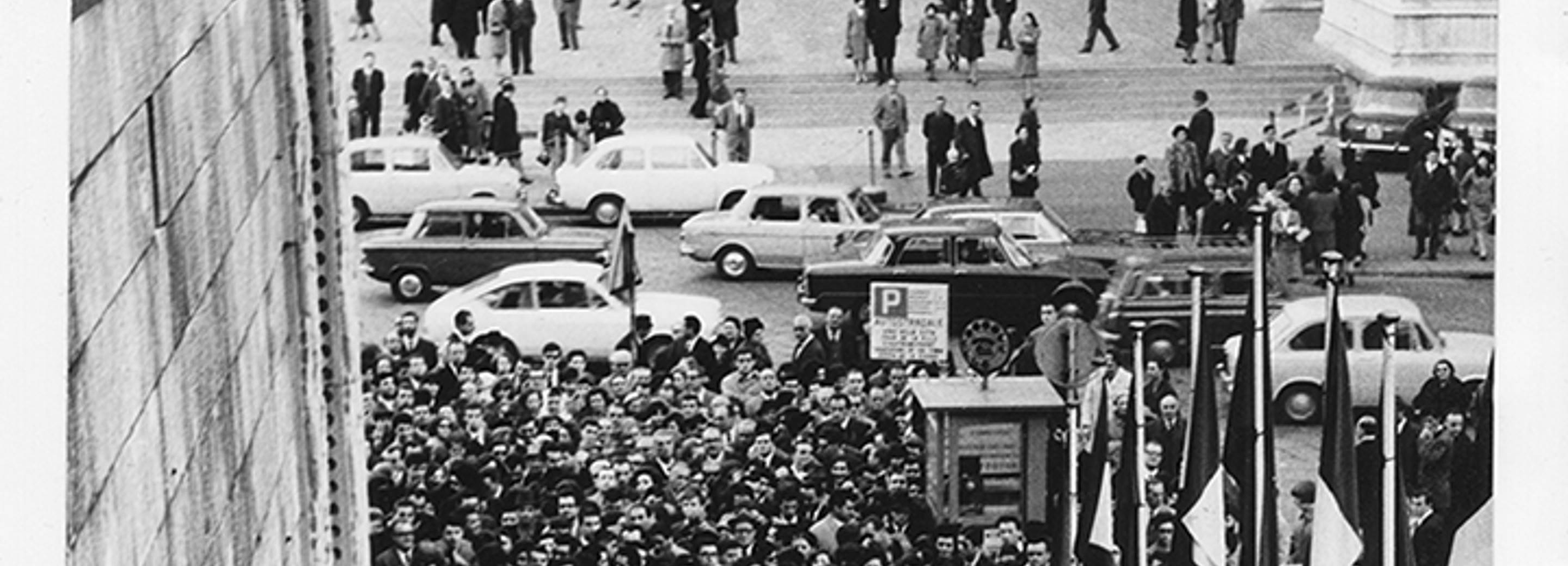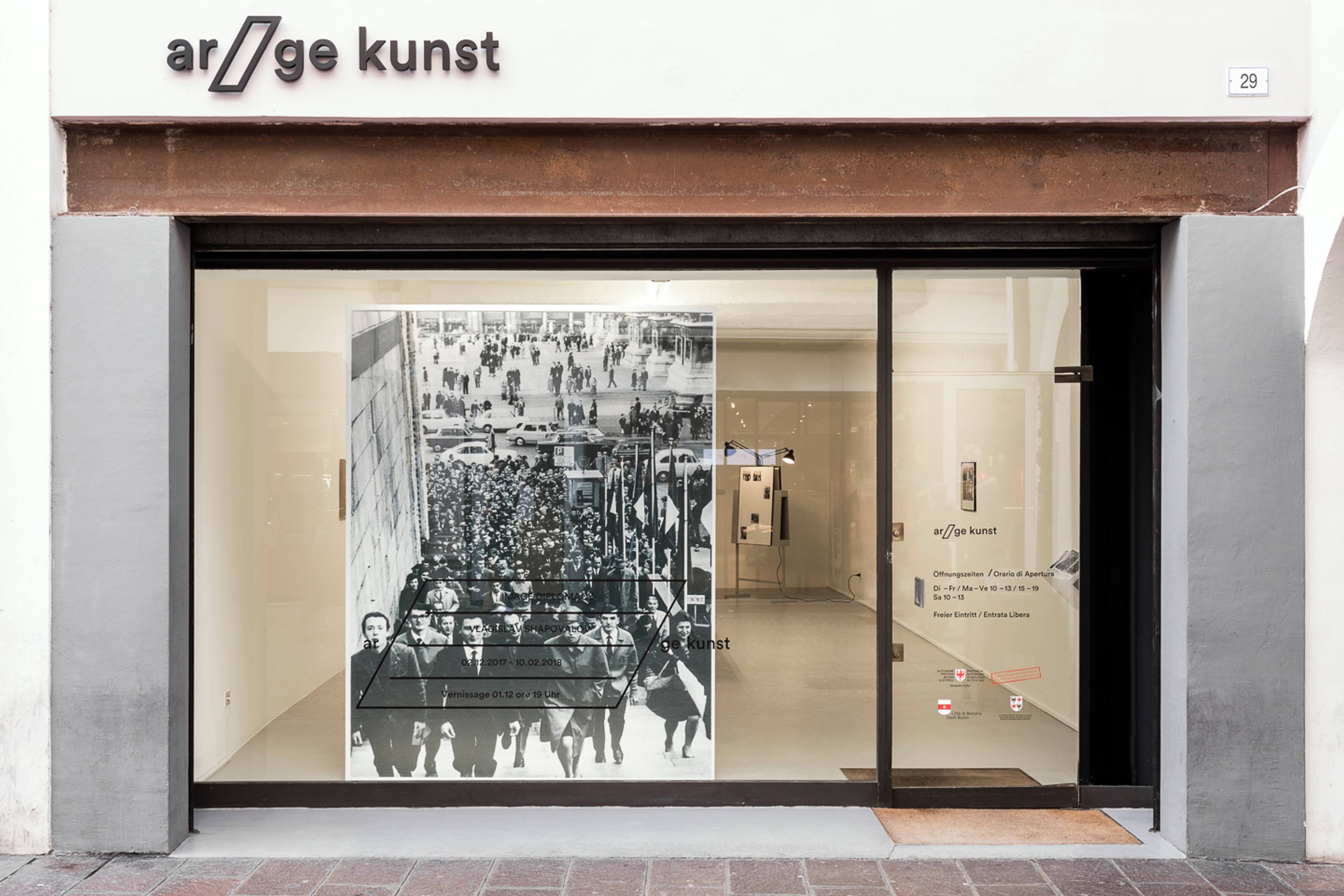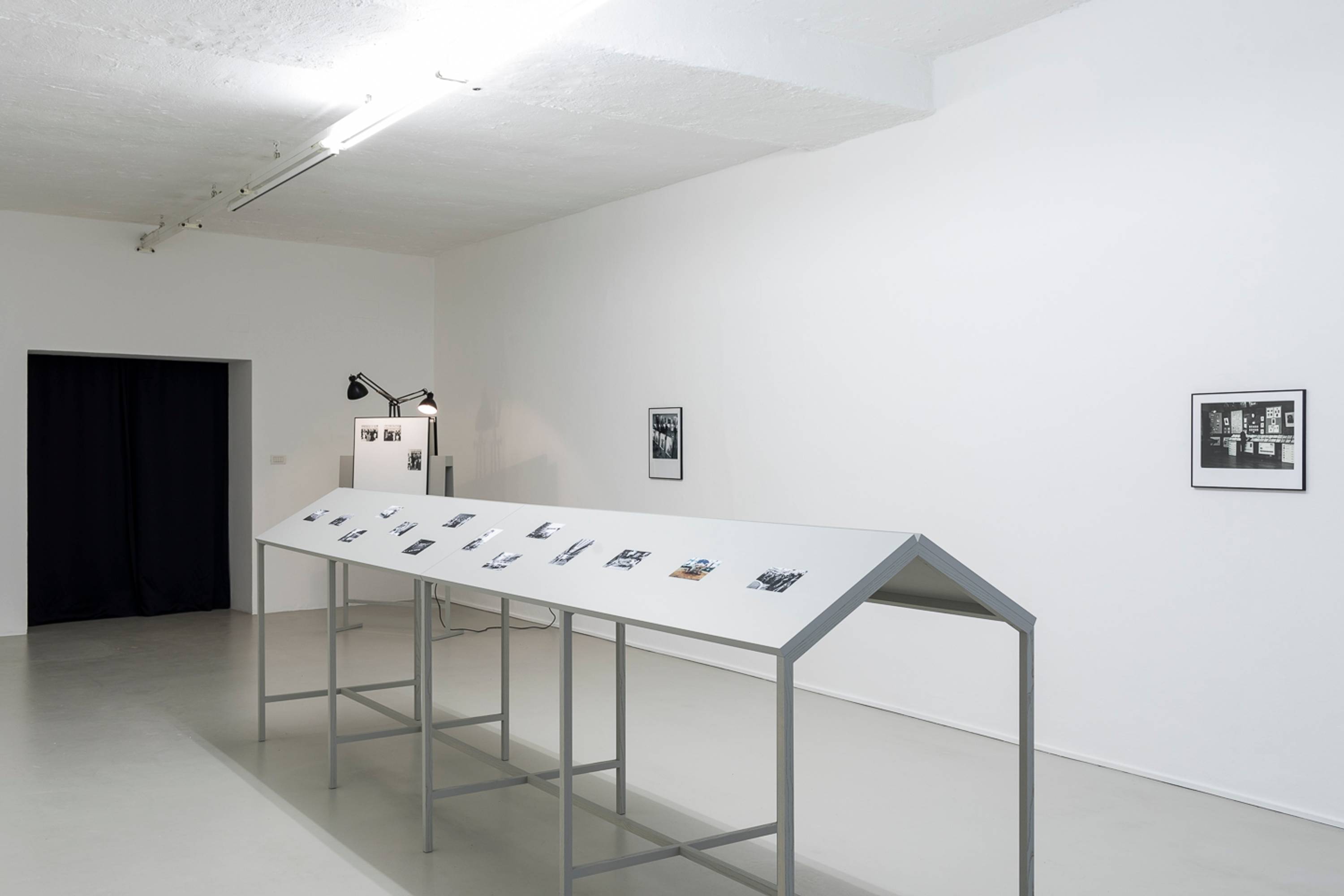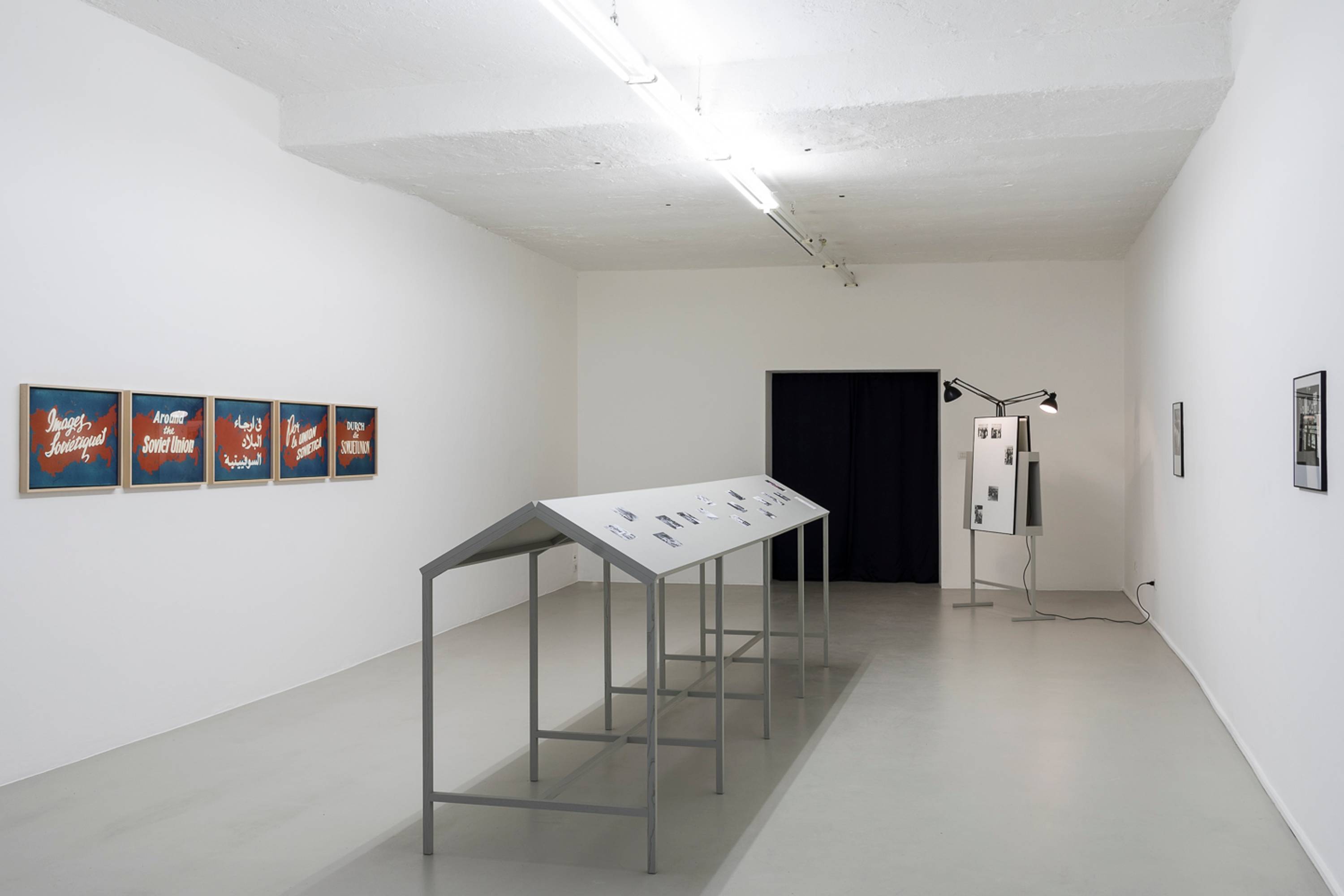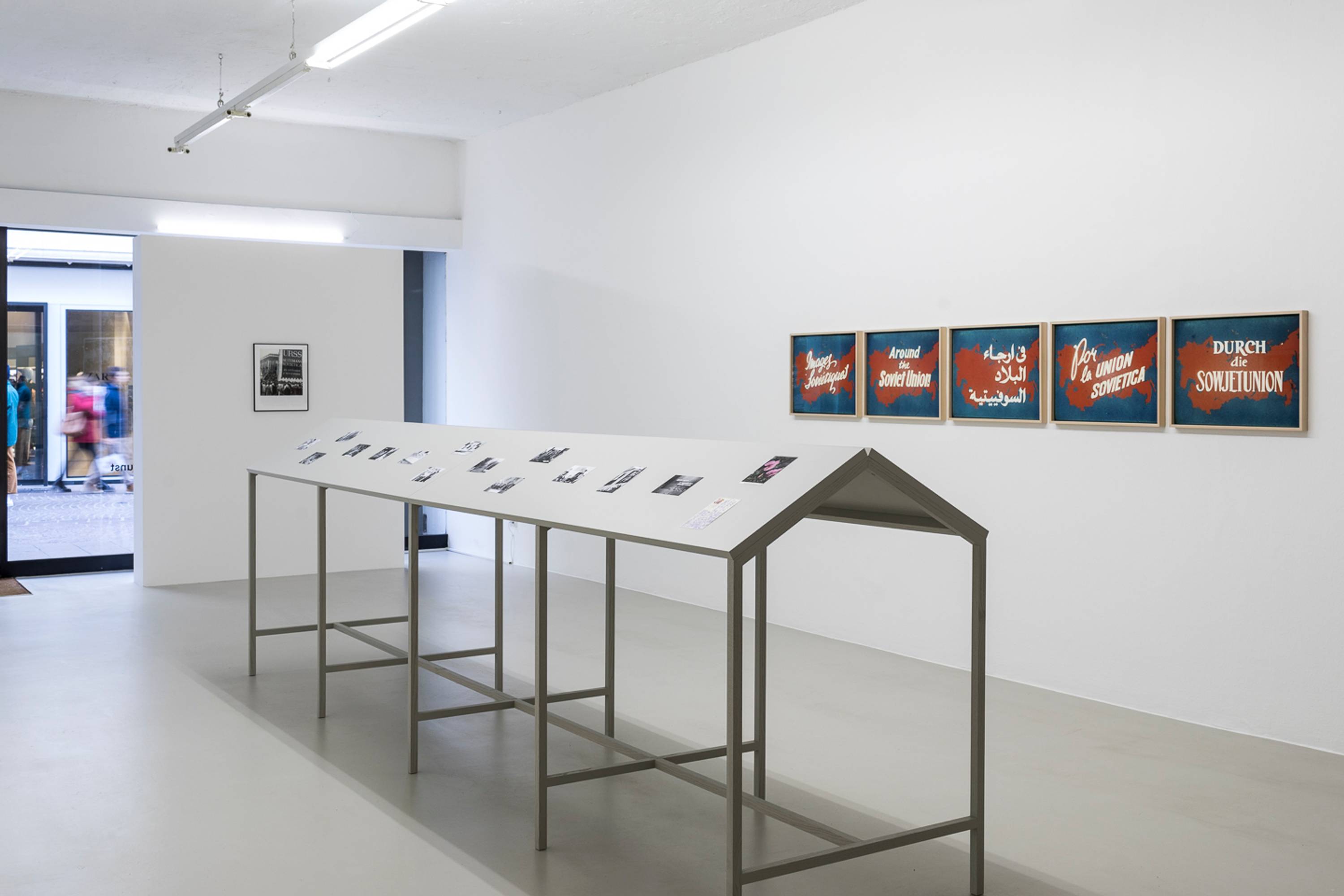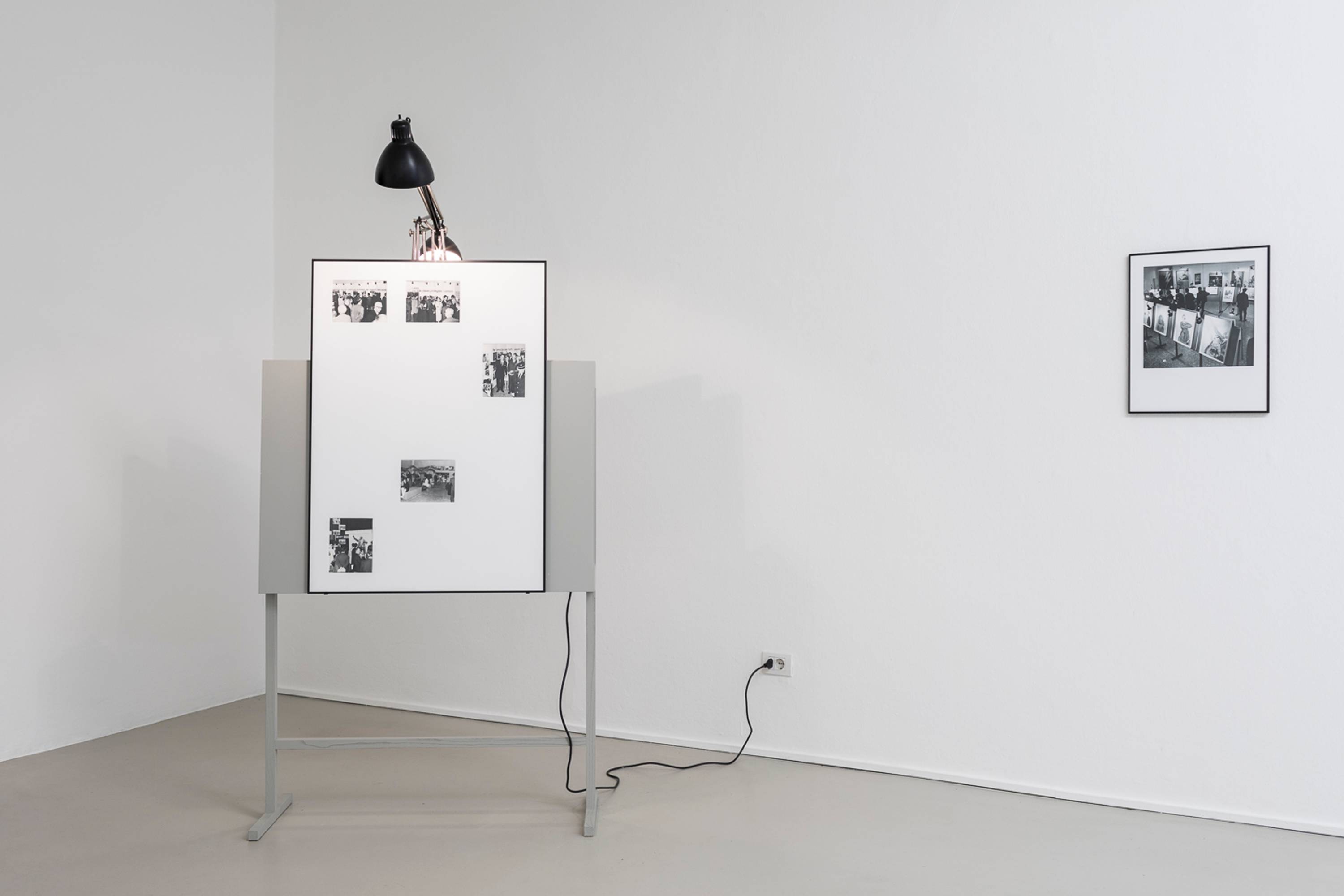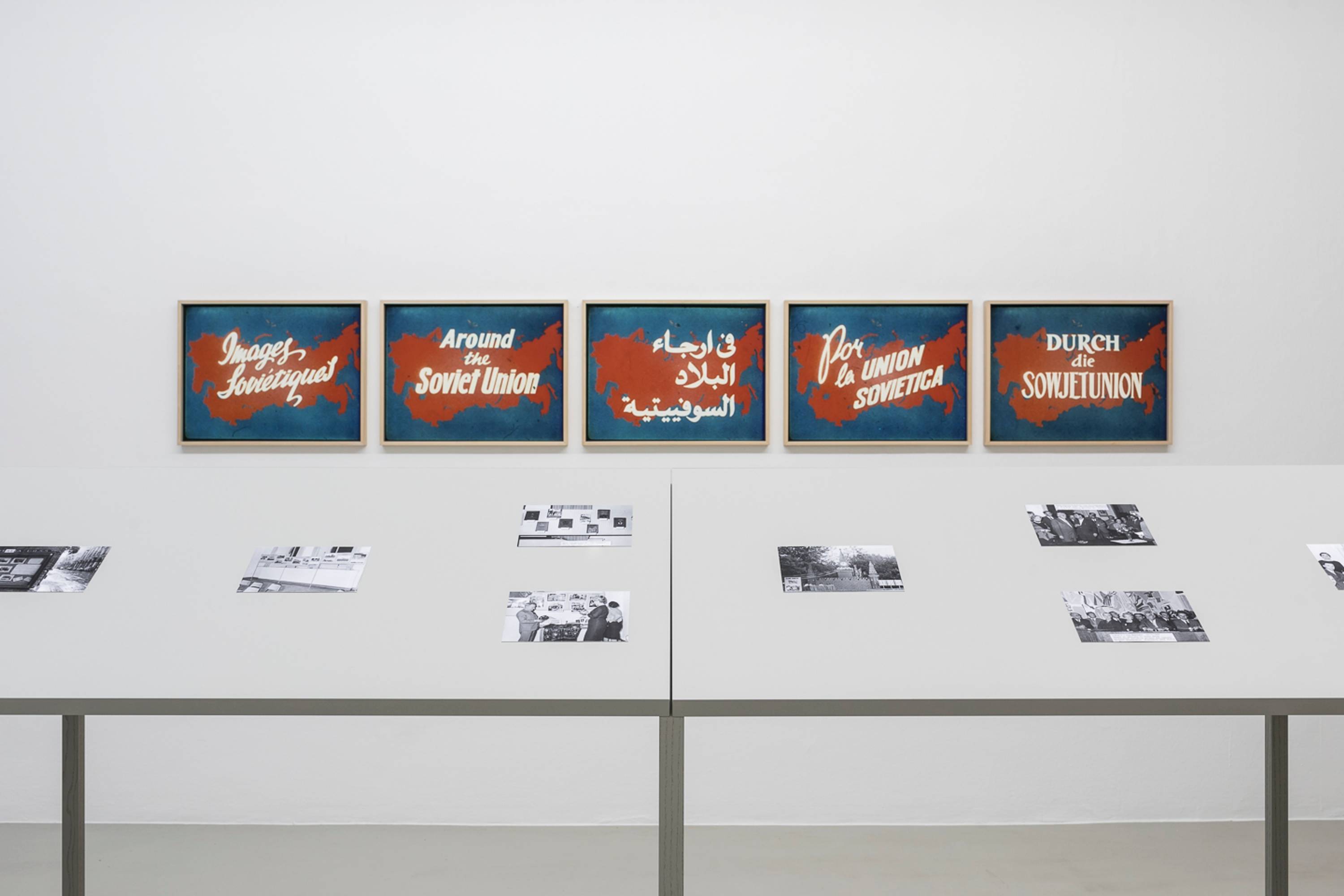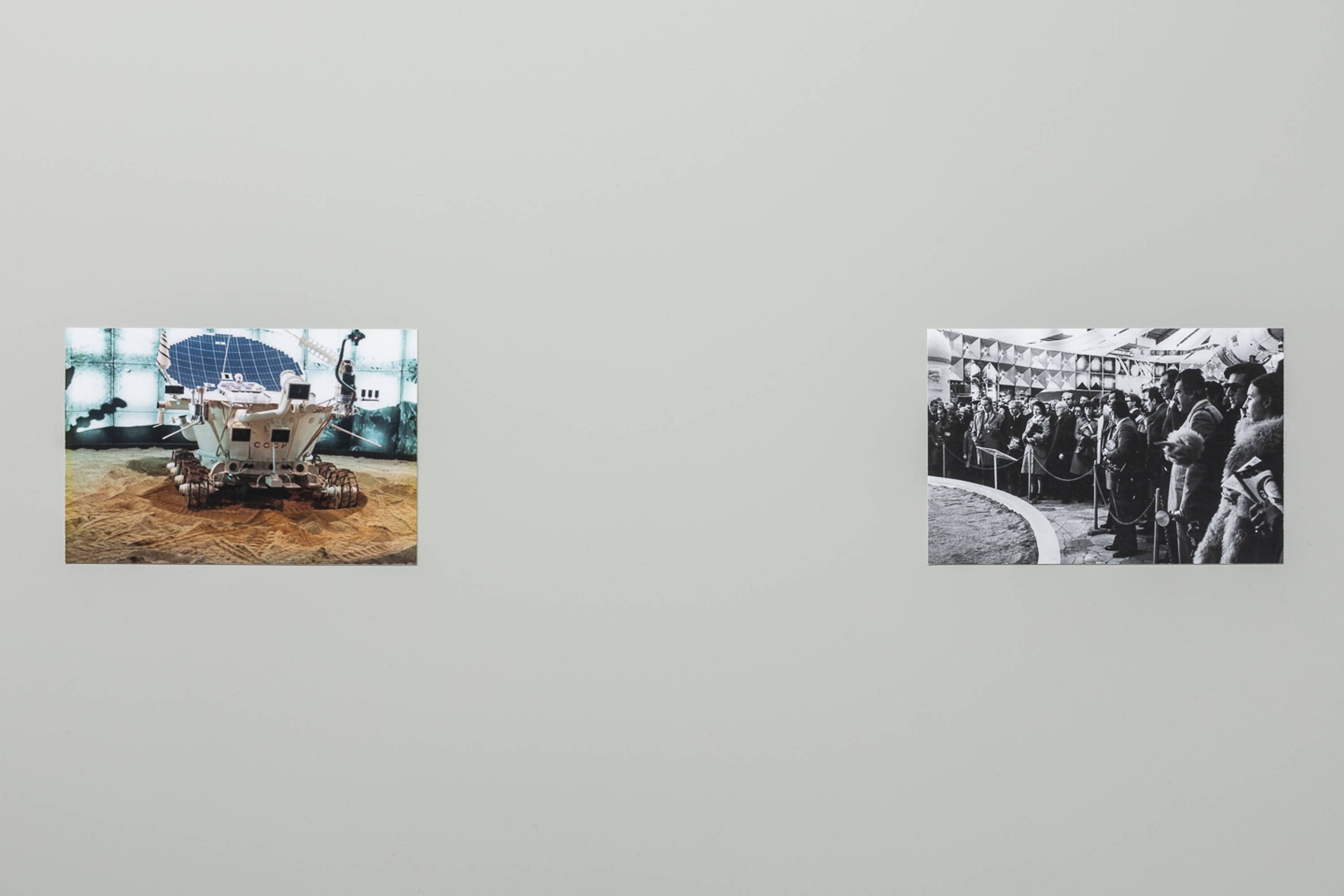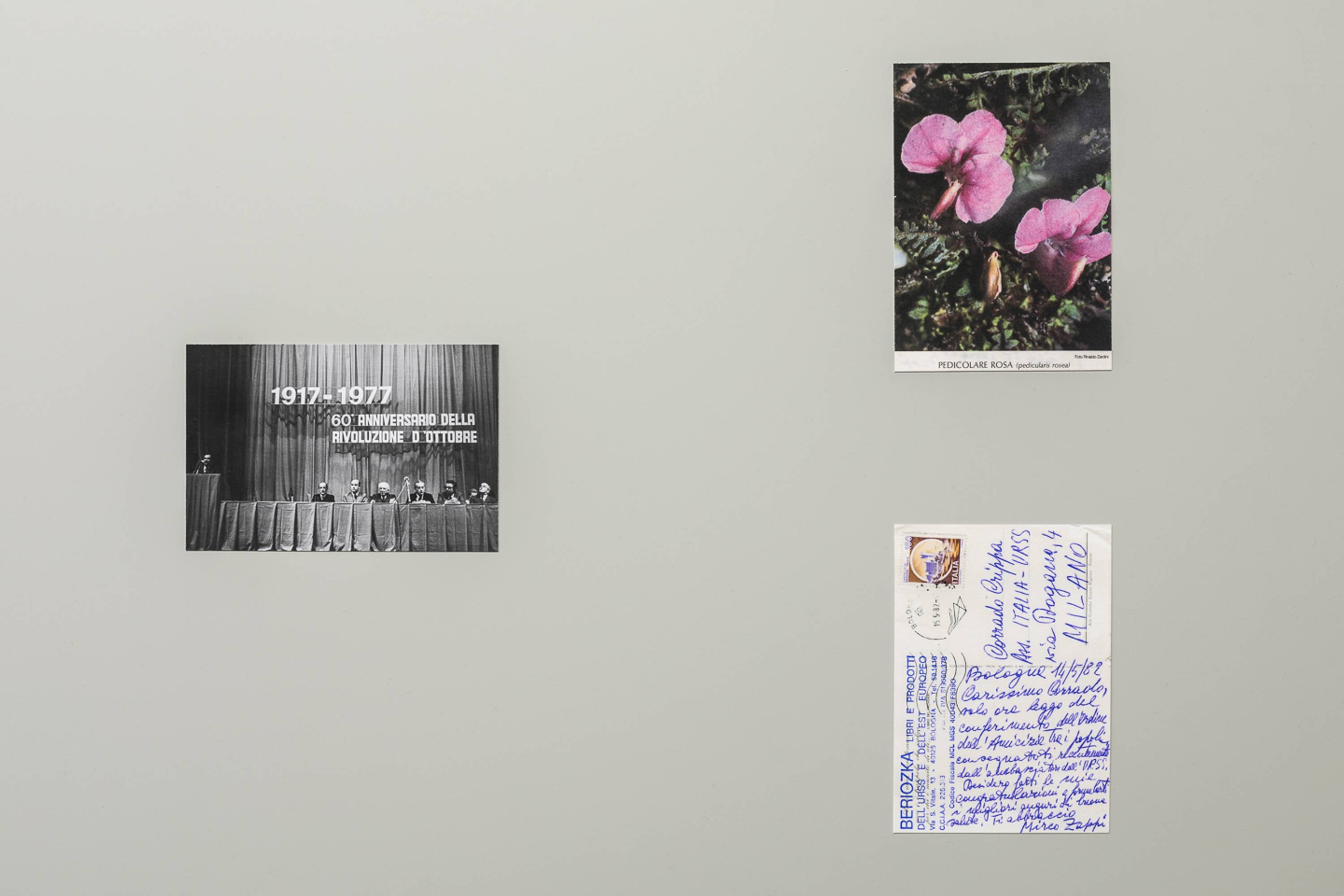IMAGE DIPLOMACY
Vladislav Shapovalov
Opening: 01.12.2017 at 7pm
Curated by Emanuele Guidi
With the first show in Italy of the Russian artist Vladislav Shapovalov, ar/ge kunst continues to present artistic practices that deal with history and the material of which it is made up; Long-term researches that are obliquely positioned in respect to official historiography, dedicating themselves to the re-composition of facts and moments considered minor, obsolete or simply forgotten; practices that above all critically investigate the media through which the story is written and communicated, and through which it continues to reverberate in the present.
In Image Diplomacy, Vladislav Shapovalov addresses the cultural and political heritage of the “Communist project” as articulated by the Soviet Union, constructing its perspective from his own biography of a young Russian who grew up in post-1989 Russia and resident for many years in Milan. It is a confrontation that is initiated by the discovery at the Italy Russia Association[1], of dozens of files containing entire photographic exhibitions and films on the most diverse aspects of life in the Soviet Union (from sport, domestic and public life, technology and work, geography and architecture, to women’s emancipation, and achievements in space exploration) in order to promote to the world the image of a modern, emancipating, internationalist and alternative project to that of American capitalism. These exhibitions were designed by the Society for Cultural Relations with Foreign Countries (VOKS)[2] and circulated through a network of friendship associations established in many countries by sympathizers for the Soviet experiment[3].
One of the central aspects of Shapovalov’s research focuses on methods of display and exhibition strategies employed for some of these expositions, which could be assembled autonomously and at low cost by simply following the instructions and technical drawings also contained in the discovered files. The idea of a modernity within anyone’s reach was proclaimed not only through the reproducibility of photography and film, but also by the display systems themselves, thus transforming the exhibition into the ideal medium for conveying and spreading this message.
Image Diplomacy thus presents a selection of photographic materials and documents that testify to the role that culture and images had on Soviet Union international relations; archival material reassembled within an installation that recalls and isolates the forms of exhibition display systems designed by VOKS, and that recount in particular the relations between the USSR and Italy (which was the country with the most deep-seated Communist Party in the West). This is accompanied by a film by the artist documenting the battle carried out in the field of “cultural diplomacy” between the two ideological blocks during the Cold War, comparing the story of exhibitions organized by the USSR and its network of friendship associations with the story of the exhibition, The Family of Man – organized by the United States at MOMA in New York in 1955 and then presented in 69 countries around the world, including Italy in 1958 and Russia in 1959[4]: On the one hand the socialist internationalism project that sought to unite Second and Third World countries, and on the other, the American universalist project.
Special thanks to:
The Italy Russia Association archive in Milan
Cineteca di Bologna
Künstlerhaus Büchsenhausen, Innsbruck
V-A-C Foundation, Moscow
Free University of Bolzano, Faculty of Design and Art
With the kind support from:
The Autonomous Province of South Tyrol, Department of Culture
Fondazione Cassa di Risparmio, Bolzano
City of Bolzano, Department of Culture
_________________________________
[1] Previously called the USSR Italy Association.
[2] Founded in the USSR in 1925, VOKS used cultural diplomacy as a tool to break what Lenin had called the “conspiracy of silence” around the country and its great social experiment (Vladislav Shapovalov, conference: Image Diplomacy – Archives that were never meant to be kept, 13th October, Garage, Moscow).
[3] In 1957, friendship associations were established with the USSR in 47 Eastern, Western and Non-Aligned countries.
[4] The exhibition has now been rebuilt at Clervaux Castle in Luxembourg, birthplace of its curator, the photographer Edward Steichen, and included in the list of Unesco’s “Memory of the World” programme.
